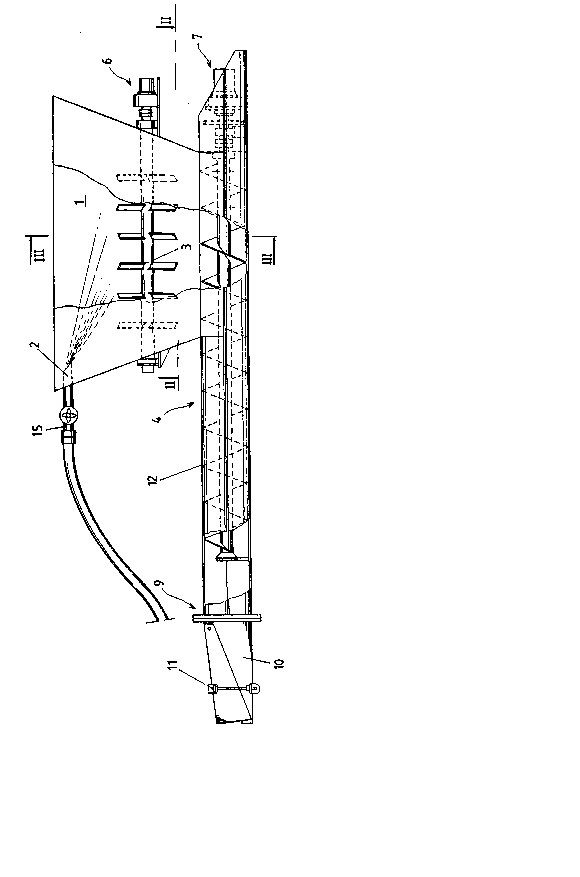Une partie des informations de ce site Web a été fournie par des sources externes. Le gouvernement du Canada n'assume aucune responsabilité concernant la précision, l'actualité ou la fiabilité des informations fournies par les sources externes. Les utilisateurs qui désirent employer cette information devraient consulter directement la source des informations. Le contenu fourni par les sources externes n'est pas assujetti aux exigences sur les langues officielles, la protection des renseignements personnels et l'accessibilité.
L'apparition de différences dans le texte et l'image des Revendications et de l'Abrégé dépend du moment auquel le document est publié. Les textes des Revendications et de l'Abrégé sont affichés :
| (12) Demande de brevet: | (11) CA 2080547 |
|---|---|
| (54) Titre français: | INSTALLATION ET PROCEDE POUR LE MALAXAGE DE MOUSSE ET DE BOUE |
| (54) Titre anglais: | DEVICE AND METHOD FOR MIXING PEAT AND SLUDGE |
| Statut: | Réputée abandonnée et au-delà du délai pour le rétablissement - en attente de la réponse à l’avis de communication rejetée |
| (51) Classification internationale des brevets (CIB): |
|
|---|---|
| (72) Inventeurs : |
|
| (73) Titulaires : |
|
| (71) Demandeurs : |
|
| (74) Agent: | SMART & BIGGAR LP |
| (74) Co-agent: | |
| (45) Délivré: | |
| (22) Date de dépôt: | 1992-10-14 |
| (41) Mise à la disponibilité du public: | 1994-04-15 |
| Requête d'examen: | 1999-09-17 |
| Licence disponible: | S.O. |
| Cédé au domaine public: | S.O. |
| (25) Langue des documents déposés: | Anglais |
| Traité de coopération en matière de brevets (PCT): | Non |
|---|
| (30) Données de priorité de la demande: | S.O. |
|---|
(57)Abstract
A method and mixer for mixing peat and sludge into a homogenous
mass, in which method the peat and sludge is mixed by
pressurizing the pre-mixed mass for some time, when the sludge
is absorbed by and bound in the peat. The mixer in accordance
with the invention includes a silo (1) and a screw conveyor (4)
located beneath it, from which the mass is squeezed out through
a nozzle (10).
Note : Les revendications sont présentées dans la langue officielle dans laquelle elles ont été soumises.
Note : Les descriptions sont présentées dans la langue officielle dans laquelle elles ont été soumises.

2024-08-01 : Dans le cadre de la transition vers les Brevets de nouvelle génération (BNG), la base de données sur les brevets canadiens (BDBC) contient désormais un Historique d'événement plus détaillé, qui reproduit le Journal des événements de notre nouvelle solution interne.
Veuillez noter que les événements débutant par « Inactive : » se réfèrent à des événements qui ne sont plus utilisés dans notre nouvelle solution interne.
Pour une meilleure compréhension de l'état de la demande ou brevet qui figure sur cette page, la rubrique Mise en garde , et les descriptions de Brevet , Historique d'événement , Taxes périodiques et Historique des paiements devraient être consultées.
| Description | Date |
|---|---|
| Inactive : CIB expirée | 2022-01-01 |
| Inactive : CIB expirée | 2022-01-01 |
| Inactive : CIB de MCD | 2006-03-11 |
| Inactive : CIB de MCD | 2006-03-11 |
| Inactive : CIB de MCD | 2006-03-11 |
| Le délai pour l'annulation est expiré | 2002-10-15 |
| Demande non rétablie avant l'échéance | 2002-10-15 |
| Réputée abandonnée - omission de répondre à un avis sur les taxes pour le maintien en état | 2001-10-15 |
| Lettre envoyée | 1999-09-27 |
| Inactive : Renseign. sur l'état - Complets dès date d'ent. journ. | 1999-09-27 |
| Inactive : Dem. traitée sur TS dès date d'ent. journal | 1999-09-27 |
| Toutes les exigences pour l'examen - jugée conforme | 1999-09-17 |
| Exigences pour une requête d'examen - jugée conforme | 1999-09-17 |
| Demande publiée (accessible au public) | 1994-04-15 |
| Date d'abandonnement | Raison | Date de rétablissement |
|---|---|---|
| 2001-10-15 |
Le dernier paiement a été reçu le 2000-10-06
Avis : Si le paiement en totalité n'a pas été reçu au plus tard à la date indiquée, une taxe supplémentaire peut être imposée, soit une des taxes suivantes :
Veuillez vous référer à la page web des taxes sur les brevets de l'OPIC pour voir tous les montants actuels des taxes.
| Type de taxes | Anniversaire | Échéance | Date payée |
|---|---|---|---|
| TM (demande, 5e anniv.) - générale | 05 | 1997-10-14 | 1997-09-08 |
| TM (demande, 6e anniv.) - générale | 06 | 1998-10-14 | 1998-09-18 |
| TM (demande, 7e anniv.) - générale | 07 | 1999-10-14 | 1999-09-16 |
| Requête d'examen - générale | 1999-09-17 | ||
| TM (demande, 8e anniv.) - générale | 08 | 2000-10-16 | 2000-10-06 |
Les titulaires actuels et antérieures au dossier sont affichés en ordre alphabétique.
| Titulaires actuels au dossier |
|---|
| VAPO OY |
| Titulaires antérieures au dossier |
|---|
| HARRI HAKASALO |